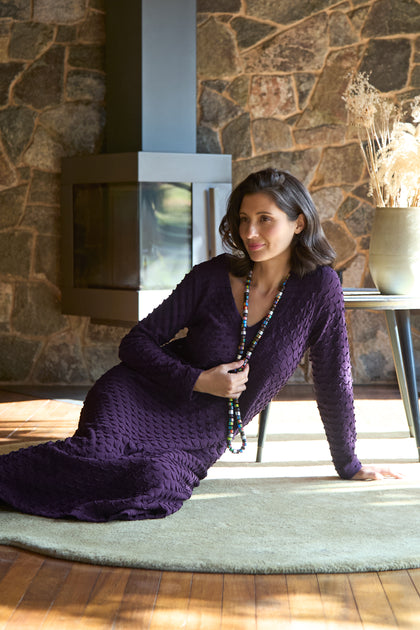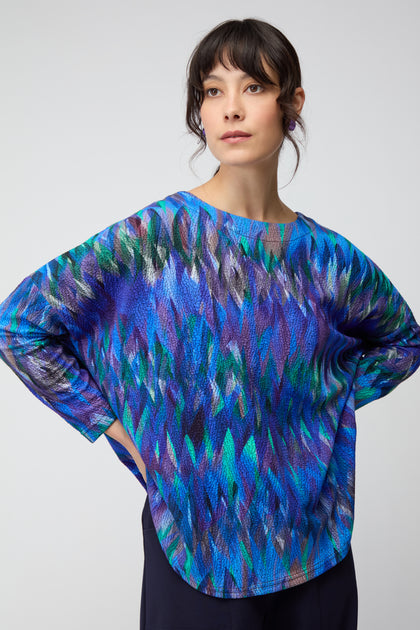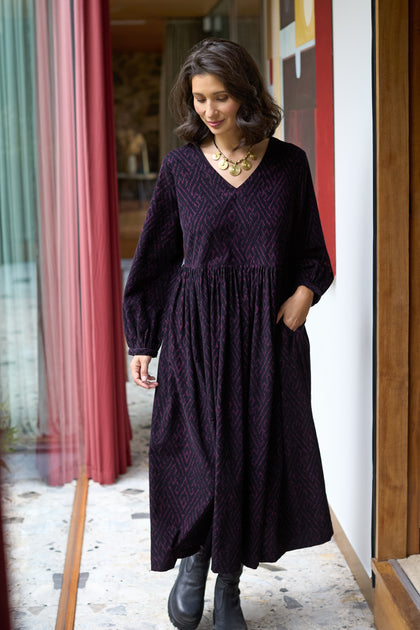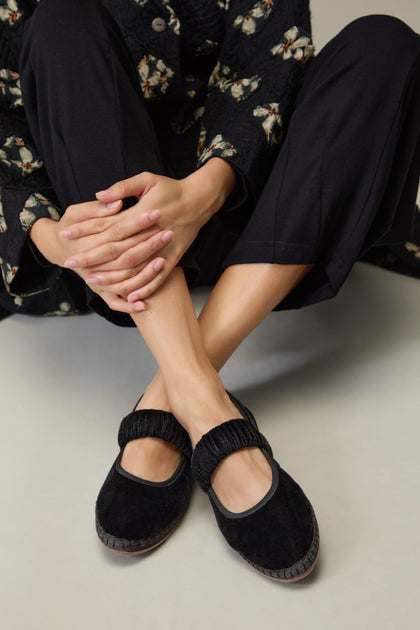At Sahara
Meet The Design Team | Conscious Fashion
Article By Sahara .
May 24, 2019
What does conscious fashion mean to you? At Sahara, we believe in creating clothes for the individual, not the crowd – providing an antidote to the culture of fast fashion. Our clothing is made to be loved and last a lifetime, as we encourage customers to invest in key pieces that they’ll want to wear time and time again.
-

With so much choice on the high street, what’s the importance of ‘conscious fashion’ to you?
Christine: I have become increasingly conscious of how much clothing ends up in landfill. Recent documentaries like Fashion’s Dirty Secrets and books like Lucy Siegle’s To Die For: Is Fashion Wearing Out the World? have heightened my awareness of the importance of ‘conscious fashion’. I try to shop more responsibly, only buying the things that I love and expect to last.
How important is longevity in your design practice?
Emily: Completely. In terms of fabric, I feel I wouldn’t choose a fabric that I felt wouldn’t survive a long time in a garment. And in terms of design for Sahara, we do not follow trends like much of the high street, instead it’s a consideration of shapes and details we feel that will work year in, year out.
Rosie: Longevity is an extremely important area of the design process which I am a part of. I work with the Garment Technologists where our aim is to ensure that all pieces of Sahara clothing are constructed to last a lifetime.

What kind of progress do you think the industry has made in terms of longevity?
Carole: I think the industry has gone backwards. Quality has become less important than price so clothes are considered disposable after a few wears and as a result end up in landfill. At Sahara we use good quality fabrics and timeless designs, so hopefully our customers will have Sahara pieces in their wardrobes for a long time.
Christine: Companies like TRAID have helped re-educate us about re-using, recycling and repairing options…but I am mindful of how much second-hand clothing ends up flooding Africa.

What is your favourite fabric / technique to work with and why?
Rosie: I think the dyed hemp collections that we have worked with are really interesting. The hemp plant can produce many products but as a cloth it’s much more durable than cotton, resistant to mildew, anti-microbial and continues to soften with each wash with fibre degradation. It also takes dye very well, which is why at Sahara you will find it comes in a range of colours.Carole: I love working with natural fabrics such as linen, which is one of the reasons I love Sahara. Also beautiful prints and embroideries are great to work on and give you such satisfaction when they work successfully.Christine: I absolutely love indigo! Whether it’s shibori, delave linen or Tencel denim – I love it. I like the fact that it is a natural dye and is centuries old as a technique. Indigo dyeing is known globally across many cultures, be they African, Japanese, Indian or Eastern European.
What are some of your favourite ‘Sahara classics’ – shapes, silhouettes, fabrics, and prints etc. that appear across seasons?
Rosie: The bubble jersey dress and textured linen bubble trousers are a firm favourite. The dress has lent itself to be made in a multitude of beautiful prints, my favourite being this year’s Sunset print. The trousers are also really versatile, my mum owns a pair and she loves how they complement her figure.Christine: I love the garment dyed linens and the textured linens. To me they typify what Sahara is about.Kelli: My favourite silhouette at Sahara is definitely the bubble shape in dresses and trousers. I love creating new and interesting textures and twists with our linen factory. For print, I love working on the vibrant painterly prints on jersey.

How would you describe your personal style?
Carole: My wardrobe is made up of vintage, mixed with designer and high street. I am a hoarder so I pull out pieces from years ago and reinvent them.Christine: No-fuss, minimal, contemporary, feminine, neutral palette.Kelli: My style is very relaxed and comfortable. My style has a nod to ‘in trend’ fashion but I tend to buy similar silhouettes so that I can easily outfit new garments with the rest of my wardrobe.Rosie: My dress sense tends to be more utilitarian and practical. I invest in good basic organic cotton t-shirts, organic denim jeans and a clean white pair of Converse hi-tops.
How has fashion added to the story of your life?
Carole: Fashion and clothes have been a huge part of my life and no matter where I am or what I am doing, I am interested where garments are made and how they are made. What people wear and their style is part of everything I do.Christine: Fashion is not a word that I use. I tend to use the words ‘clothes’ and ‘cloth’. Through my work as a designer I have travelled the world, visiting countries that I never dreamt that I would. Writing and speaking about the cultural studies of clothes/cloth has also brought amazing opportunities into my path. I have met some incredibly inspiring creative people.
Kelli: For me fashion is ‘walking art’. If you are true to your own personal style then you are ‘fashionable’. That doesn’t mean wearing whatever is in trend. I have chosen to be a fashion designer because I love all of the elements of fashion design – compiling mood and colour boards, choosing/developing fabrics, designing the silhouette and outfitting.

Do you have a favourite garment that has ‘lasted a lifetime’?
Emily: I have jumpsuits that I have been wearing for years, not necessarily because of the quality (I’ve had to change zips, and sew up hems) but the designs are long-lasting and I have worn them for many main events in my life.Rosie: I have a vintage 80s printed lined denim jacket that I purchased in my mid-teens, which previous to me I expect had an exciting life, and continues to do so with me now.
What is the best way to give new life to old wardrobe pieces?
Carole: My daughter has inherited a huge amount of my archive which she loves wearing and it’s great seeing her give them a new lease of life.Emily: Fixing broken clothes would ideally be the best way but if the garment is no longer wanted, I think giving to charity of a family member/friend would be best. Recycling is a good option but it is again another process.Rosie: For me it’s all about reinventing that piece of clothing e.g. turning dresses into tops, shortening sleeves, or tapering trouser legs can completely transform the silhouette and present you with an entirely new piece of clothing. Once I’ve exhausted this process then I like to donate to TRAID.




